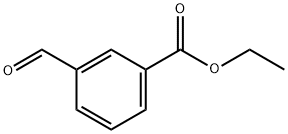DIALLYL ISOPHTHALATE
- CAS NO.:1087-21-4
- Empirical Formula: C14H14O4
- Molecular Weight: 246.26
- MDL number: MFCD00048174
- EINECS: 214-122-9
- SAFETY DATA SHEET (SDS)
- Update Date: 2024-12-18 14:08:57

What is DIALLYL ISOPHTHALATE?
The Uses of DIALLYL ISOPHTHALATE
Diallyl isophthalate (DAIP) has the advantage over the ortho isomer that it polymerizes faster and gives polymers of better heat resistance. The DAIP prepolymer is less stable than the diallyl phthalate prepolymer. Cured moldings from DAIP monomer-prepolymer compositions can be better processed than cured diallyl phthalate moldings because of their greater fluidity. Compositions containing DAIP prepolymers can be used for the production of hard, translucent, abrasive-resistant, and laser-trimmable coatings.
Preparation
Diallyl isophthalate (DAIP) is prepared by esterification of isophthalic acid
with allyl alcohol:

The polymers of diallyl isophthalate are very similar in preparation, properties and application to the polymers of diallyl phthalate described above. Mouldings based on diallyl isophthalate are more expensive but have enhanced thermal stability (withstanding up to about 220??C for long periods) and resistance to organic solvents.
Flammability and Explosibility
Not classified
Properties of DIALLYL ISOPHTHALATE
| Melting point: | -3℃ |
| Boiling point: | 176-177°C 5mm |
| Density | 1.13 |
| vapor pressure | 0.155Pa at 25℃ |
| refractive index | 1.5230-1.5270 |
| Flash point: | 163 °C |
| storage temp. | 0-10°C |
| Specific Gravity | 1.125 (20/4℃) |
| Water Solubility | 33.8mg/L at 25℃ |
| CAS DataBase Reference | 1087-21-4(CAS DataBase Reference) |
| EPA Substance Registry System | 1,3-Benzenedicarboxylic acid, di-2-propenyl ester (1087-21-4) |
Safety information for DIALLYL ISOPHTHALATE
| Signal word | Warning |
| Pictogram(s) |
 Exclamation Mark Irritant GHS07 |
| GHS Hazard Statements |
H302:Acute toxicity,oral H315:Skin corrosion/irritation H319:Serious eye damage/eye irritation |
| Precautionary Statement Codes |
P264:Wash hands thoroughly after handling. P264:Wash skin thouroughly after handling. P270:Do not eat, drink or smoke when using this product. P280:Wear protective gloves/protective clothing/eye protection/face protection. P501:Dispose of contents/container to..… |
Computed Descriptors for DIALLYL ISOPHTHALATE
DIALLYL ISOPHTHALATE manufacturer
New Products
Tert-butyl bis(2-chloroethyl)carbamate 4-Methylphenylacetic acid N-Boc-D-alaninol N-BOC-D/L-ALANINOL N-octanoyl benzotriazole 3-Morpholino-1-(4-nitrophenyl)-5,6-dihydropyridin- 2(1H)-one Furan-2,5-Dicarboxylic Acid DIETHYL AMINOMALONATE HYDROCHLORIDE 1,1’-CARBONYLDIIMIDAZOLE R-2-BENZYLOXY PROPIONIC ACID 1,1’-CARBONYLDI (1,2-4 TRIAZOLE) N-METHYL INDAZOLE-3-CARBOXYLIC ACID (2-Hydroxyphenyl)acetonitrile 4-Bromopyrazole 5-BROMO-2CYANO PYRIDINE 5,6-Dimethoxyindanone 5-broMo-2-chloro-N-cyclopentylpyriMidin-4-aMine 2-(Cyanocyclohexyl)acetic acid 4-methoxy-3,5-dinitropyridine 1-(4-(aminomethyl)benzyl)urea hydrochloride 2-aminopropyl benzoate hydrochloride diethyl 2-(2-((tertbutoxycarbonyl)amino) ethyl)malonate tert-butyl 4- (ureidomethyl)benzylcarbamate Ethyl-2-chloro((4-methoxyphenyl)hydrazono)acetateRelated products of tetrahydrofuran








You may like
-
 1087-21-4 Diallyl isophthalate 98%View Details
1087-21-4 Diallyl isophthalate 98%View Details
1087-21-4 -
 Diallyl Isophthalate CAS 1087-21-4View Details
Diallyl Isophthalate CAS 1087-21-4View Details
1087-21-4 -
 1975-50-4 98%View Details
1975-50-4 98%View Details
1975-50-4 -
 2-HYDROXY BENZYL ALCOHOL 98%View Details
2-HYDROXY BENZYL ALCOHOL 98%View Details
90-01-7 -
 2-Chloro-1,3-Bis(Dimethylamino)Trimethinium Hexafluorophosphate 221615-75-4 98%View Details
2-Chloro-1,3-Bis(Dimethylamino)Trimethinium Hexafluorophosphate 221615-75-4 98%View Details
221615-75-4 -
 14714-50-2 (2-Hydroxyphenyl)acetonitrile 98+View Details
14714-50-2 (2-Hydroxyphenyl)acetonitrile 98+View Details
14714-50-2 -
 118753-70-1 98+View Details
118753-70-1 98+View Details
118753-70-1 -
 733039-20-8 5-broMo-2-chloro-N-cyclopentylpyriMidin-4-aMine 98+View Details
733039-20-8 5-broMo-2-chloro-N-cyclopentylpyriMidin-4-aMine 98+View Details
733039-20-8
Statement: All products displayed on this website are only used for non medical purposes such as industrial applications or scientific research, and cannot be used for clinical diagnosis or treatment of humans or animals. They are not medicinal or edible.